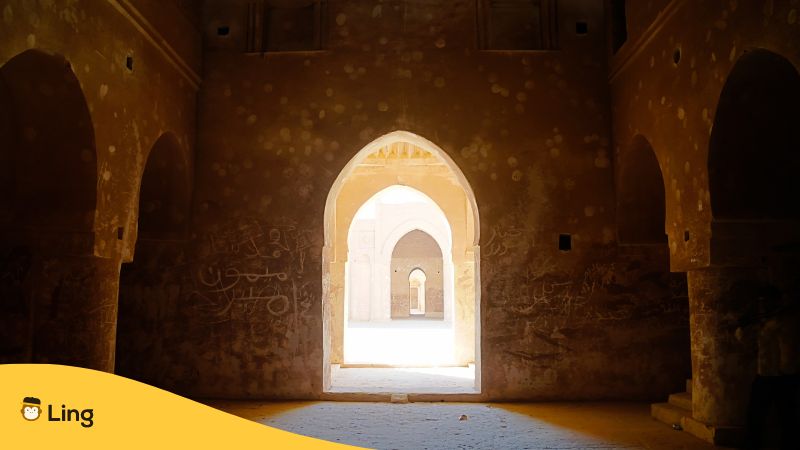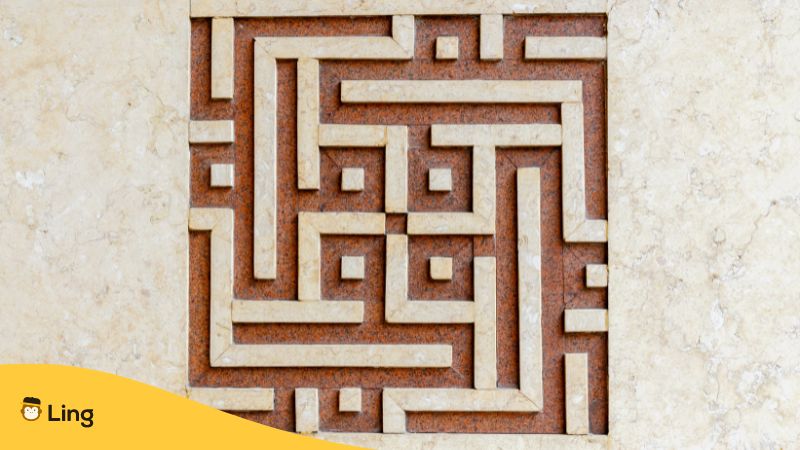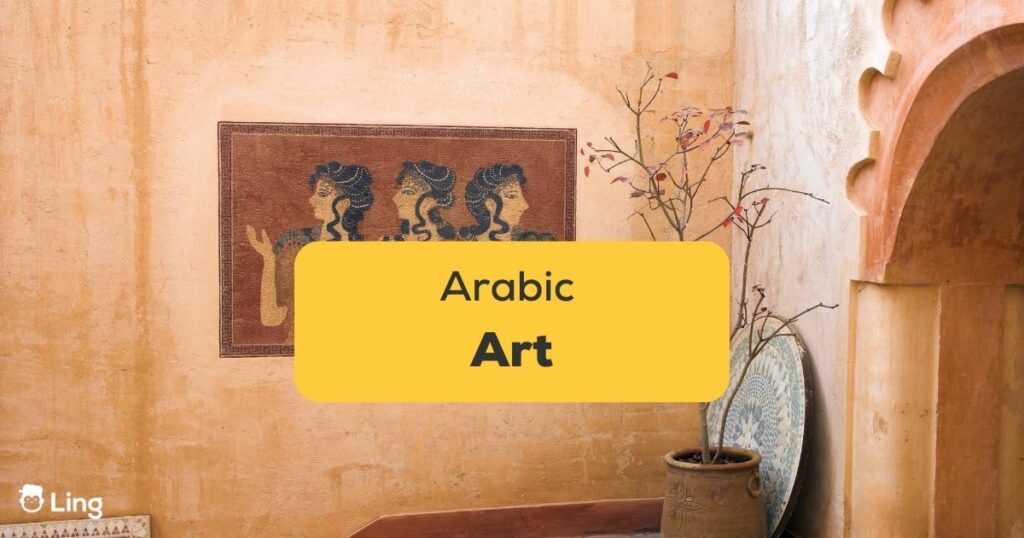From intricate calligraphy and geometric patterns to vibrant paintings and sculptures, Arabic art or فن (pronounced as fann) is known for its rich and diverse aesthetic styles. In this blog, we will explore the history and evolution of Arabic art, highlighting some of the most notable works and artists from the Arab world. We will also delve into the cultural and historical contexts that have shaped the development of Arabic art over the centuries. Whether you are an art enthusiast or simply looking to learn more about the Arab world, this blog offers a fascinating glimpse into the rich and vibrant world of Arabic art.
The Evolution Of Arabic Art
Pre-Islamic Art
Before the rise of Islam in the 7th century, much of the Middle East was ruled by various dynasties and empires that practiced forms of art that pre-date the development of Islamic art. Some of this region’s most prominent pre-Islamic art include the Palmyra Reliefs, Assyrian stone carvings, and Babylonian terracotta figurines. Digital art in Arabic culture still portrays the Ruins Of The Ancient City Of Palmyra with a similar design in different forms.
The Palmyra Reliefs, created around the 2nd century A.D., are some of the earliest examples of figurative sculpture in the Middle East. These reliefs are characterized by their lifelike depictions of animals and mythological figures, and they also often depicted gods and goddesses from Greek and local traditions.
The Assyrian stone carvings, which date back to the 8th century B.C., are renowned for their intricate designs. These carvings often depicted warfare scenes and powerful gods, goddesses, and kings.
Finally, the Babylonian terracotta figurines, created around 3200 B.C., are characterized by their unique combination of realism and abstraction. These figurines often depicted gods, goddesses, and people from local mythology.
Overall, pre-Islamic art in the Middle East provided an essential foundation for developing Islamic art in the region. These works’ varied styles and themes inspired later Islamic art forms and helped create a distinct aesthetic for the Islamic world.
The Umayyad Period
The Umayyad dynasty, which began in 661, marked the start of a golden age of Arabic art. This period is known for its architectural achievements, including the Dome of the Rock in Jerusalem and the Great Mosque in Damascus.
In terms of Islamic art, this period saw the emergence of new styles such as arabesque, a complex and intricate design style, and calligraphy. These designs can be seen in Islamic manuscripts and ceramics, and metalwork. A wish to surpass the quality of Chinese porcelain was also shown in this era. Luster Painting is a name given to paintings closely related to Chinese porcelain.
The Abbasid Period

The Abbasids were a powerful dynasty that created a huge empire that stretched from northern India to southern Spain. This vast area had diverse cultures and art styles, influencing the Abbasid aesthetic.
One of the most notable characteristics of Abbasid art is its use of vibrant colors and intricate patterns. These were often used in calligraphy, carpets, and tilework. Many of these patterns were inspired by nature and could be seen in almost any type of decorative item from this period.
Another hallmark of this period was the development of metalwork. Gold and silver objects were often decorated with colorful enamels and carved with elaborate designs. In addition to metalwork, ivory carvings, glassware, and pottery were also popular during this time.
The architecture from this period also impacted Islamic art. Mosques and other religious buildings were built with intricate detail and decorated with colorful tiles and mosaics. These buildings often featured arches and domes, which became a defining element in Islamic architecture.
The Abbasids strongly influenced Islamic culture, and their legacy can still be seen in many aspects of Arab art. The vibrant colors, intricate patterns, and use of metalwork have become synonymous with Arabic art and continue to be some of the most defining features of Islamic art even today.
The Ottoman Period
One of the most famous works of Ottoman art is the Blue Mosque in Istanbul. This mosque, completed in 1616, is known for its intricate tiles and calligraphy, and it is an iconic example of the fusion of Islamic and Christian influences in Ottoman architecture.
Other notable examples of Ottoman art include Iznik pottery, characterized by vibrant blue and turquoise colors. This style of pottery was popularized during the reign of Suleiman the Magnificent.
The Ottoman Empire was also influential in the development of Islamic miniature painting. Miniature paintings were often used to decorate religious manuscripts and works of literature. During this time, artists began to use oil paint, resulting in a more detailed painting style.
The influence of Ottoman art can still be seen today in many parts of the Middle East. In addition to architecture, its effect can be seen in everything from Islamic calligraphy to ceramics to miniature painting.
The Modern Period

One artist who contributed significantly to the Modern Period was Kamal Boullata, an important figure in Palestinian art. He explored abstract and figurative styles, often blending them in his work. His works often explored human rights, war, and colonialism themes. Another influential artist was Mona Hatoum, who combined abstract and figurative elements. Her work usually contained political and social messages and used various mediums, including performance art and video installations.
Today, contemporary Islamic art continues to grow and evolve. As the world becomes increasingly interconnected, artists embrace global influences and create unique and diverse works of art. Themes of identity, faith, and culture are still common among modern Islamic art and new topics like technology, globalization, and environmentalism. Undoubtedly, the Modern Period of Arabic Art will continue to surprise us in the years to come.
Over To You

Arabic art has been shaped by a complex and long-lasting history of civilizations, religious influences, and diverse cultural traditions. From the ancient to the modern era, Islamic art has evolved to become one of the world’s most stunning and revered forms of artwork. With intricate designs, ornate motifs, and complex compositions, Islamic art symbolizes beauty and refinement that has transcended time.
Though the various civilizations have come and gone, the artistic legacy of Arabic art lives on in the beautiful pieces created by today’s artists. Islamic art will continue to inspire and captivate viewers for centuries.
If you want to visit an Arab country, then learning Arabic will be really helpful. Want to know what might be more helpful? Ling! Ling is helping many students in learning 60+ languages. Its easy and interactive formats make it fun to learn a new language. Want to try it out? You can start your language learning journey with Ling today on iOS or Android.
Don’t forget to check out our lessons, like Arabic numbers.

















